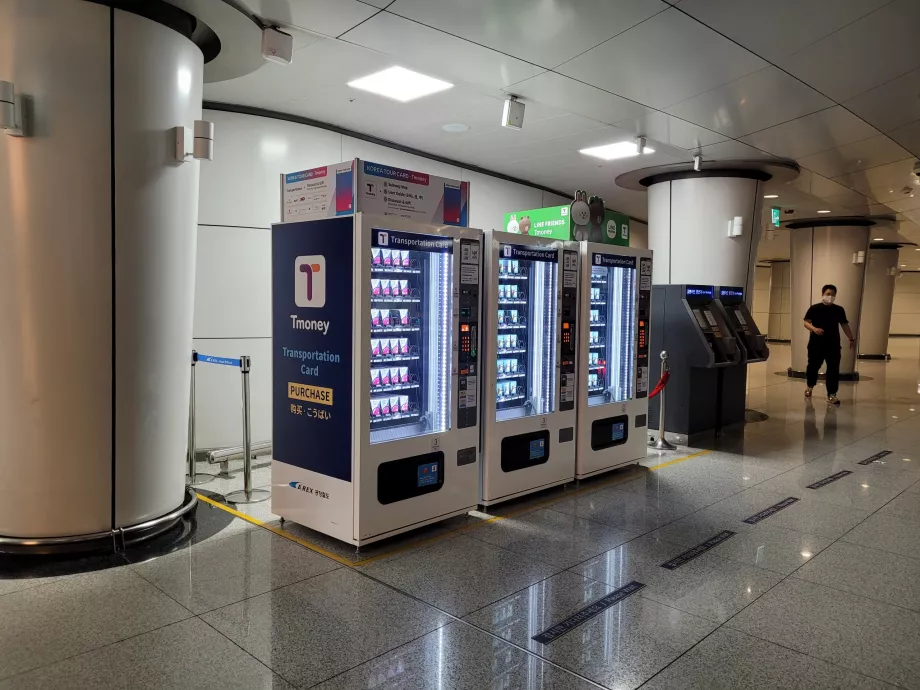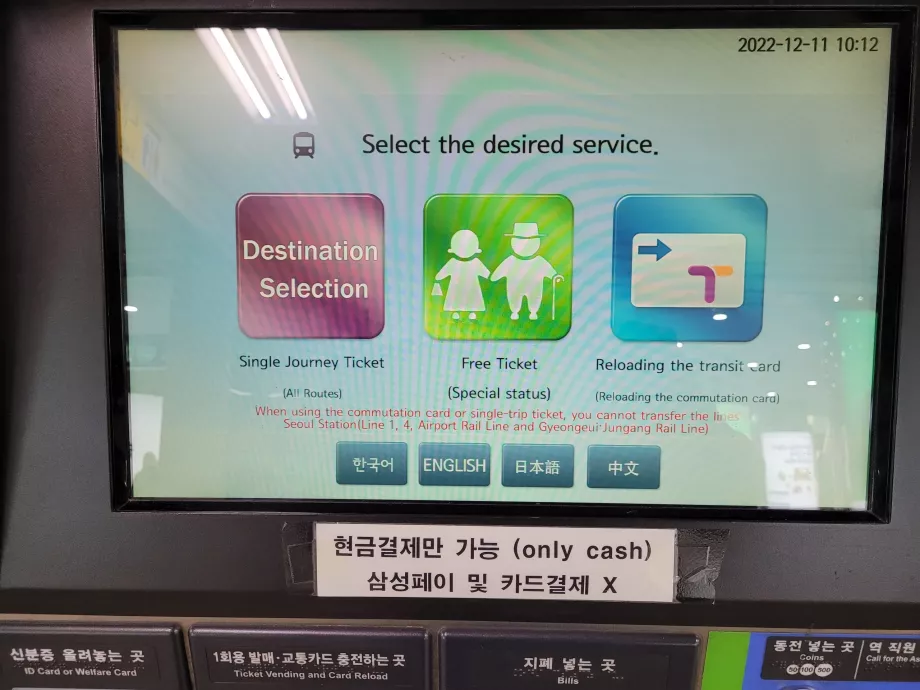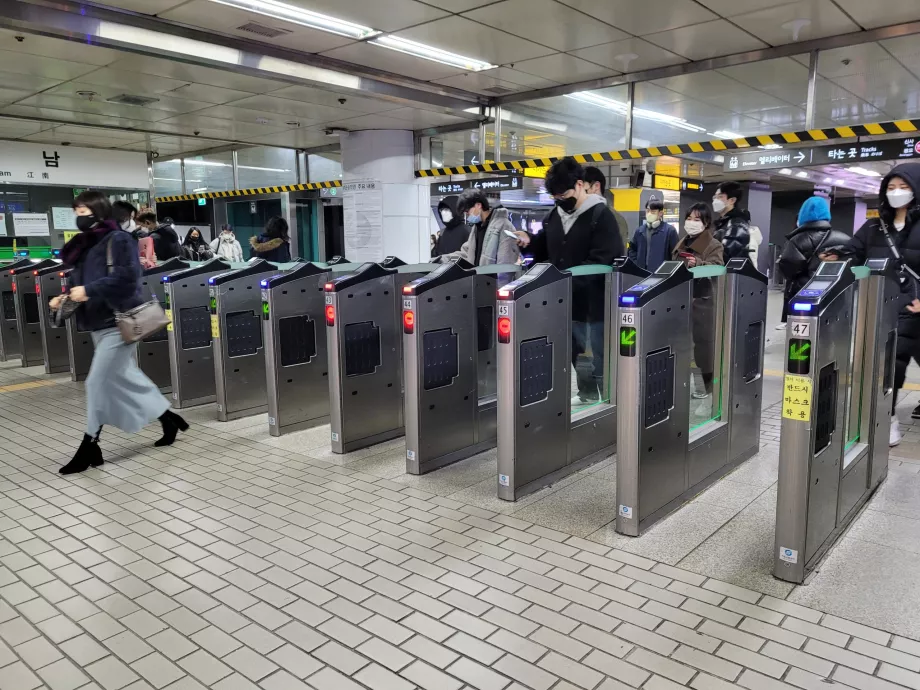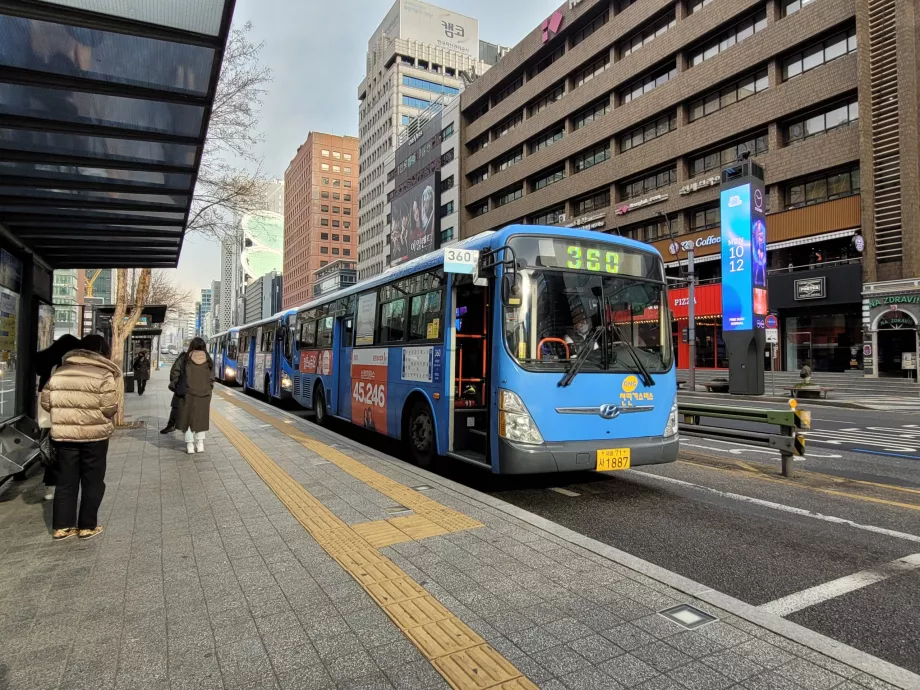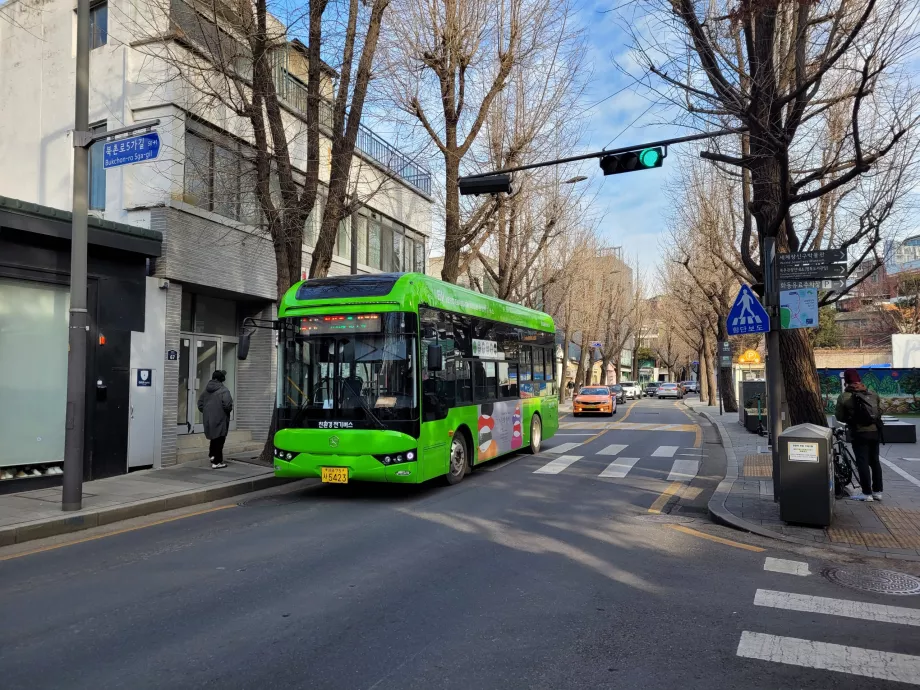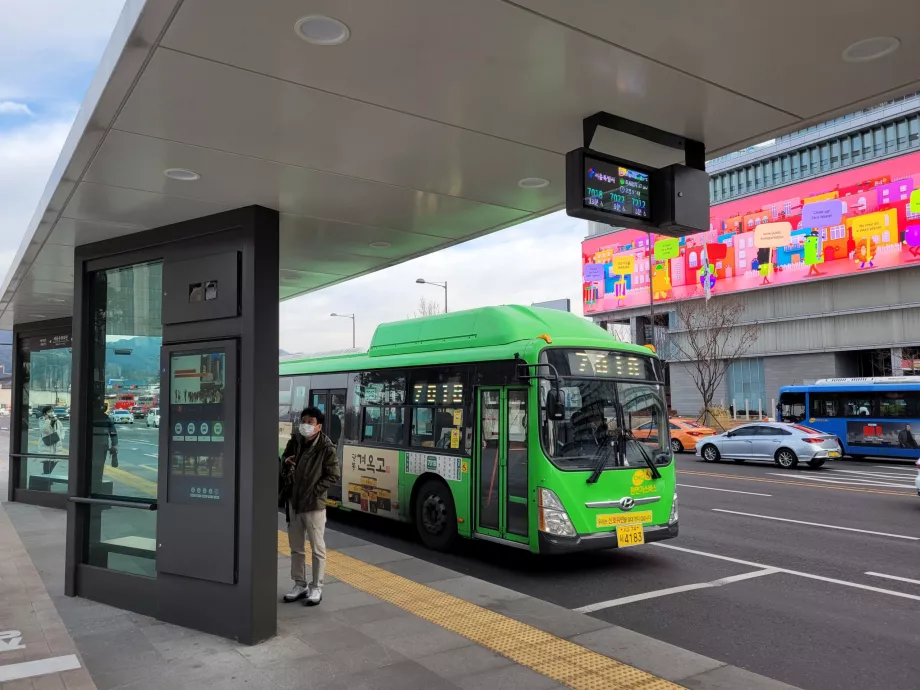Getting around Seoul
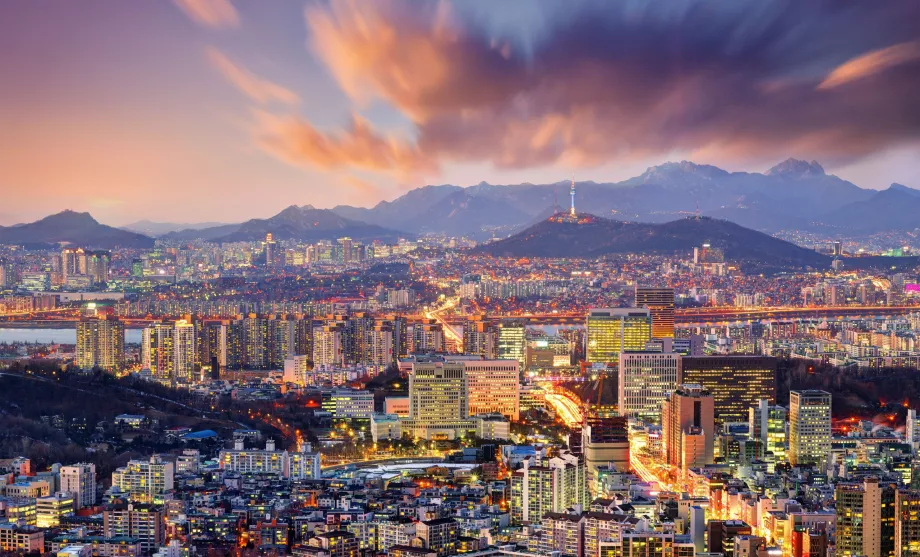
Seoul is a huge city, with others piling up to form one conurbation of 25 million people. That's why transportation in Seoul is a topic that every visitor to the city will address, even for short trips of a few hours when transferring at Incheon Airport.
What's the best way to get around Seoul? How much do metro or bus tickets cost and where to buy them? Read on in this chapter.
Tickets, T-money Card, Wowpass and Mpass
Special transport cards, Wowpass, Tmoney and Cashbee, have been created for the entire public transport system in Seoul and other cities.
The Tmoney card (sometimes written as T-money) was originally created for Seoul, while Cashbee was created for the second largest city, Busan. Over time, however, the validity of both cards has been extended to virtually all public transport systems in Korea.
Thus, a Tmoney card purchased in Seoul can be used to travel and recharge in any Korean city, just as a Cashbee card purchased in Busan can be used to travel around Seoul.
You can pay for metro and bus tickets using the following methods:
- By transport card (Wowpass, T-money or Cashbee).
- Mpass card
- Cash
- Discover Seoul Pass
- By credit card (currently this option only exists for cards issued in Korea)
Wowpass
The Wowpass multi-function card is a reloadable payment card that you load with credit and can then pay at all shops and services in Korea.
This can be very relieving as many services accept Korean but not foreign credit cards.
In addition, you can also load T-Money transport credit onto your Wowpass card and no longer need to purchase the T-Money / Cashbee card below separately.
When you reload your card, you reload two balances - for regular payments and T-Money for paying for transportation across the country.
The standard card costs 5 000 krw and can be ordered online before you travel to Korea at wowpass.io/purchase.
You can then pick up the card at the location of your choice - all international airports or ports.
You can top up your card at Wowpass kiosks located in most metro stations or train stations, or more conveniently via the mobile app (Google Play / App Store).
T-money Card
The most common and in most cases the most convenient way to pay for tickets is the T-money card. If you are coming to Seoul from Busan or South Korea, you can also use the local Cashbee card under exactly the same conditions.
Official information about the Korea Tour Card: koreatourcard.kr
Where to buy the Tmoney Card and how much does it cost?
The T-money Card itself costs 4 000 krw.
At Incheon airport, use the machine called "Korea Tour Card". This price is non-refundable and does not include any fare. You have to top it up at a separate machine and then at any machine in all subway stations across Korea, as well as at all mini-grocery stores across the country (7-Eleven, emart24, for example).
The T-money or Korea Tour Card is not only a transport card, but also provides discounts in many shops across the country, see the list of benefits.
Recharging and buying T-money Card in the vending machine is only possible with cash, however, at 7-Eleven or emart24 stores and other retailers you can pay for the recharge with your credit card.
How does the Tmoney Card work?
After you buy the card, you need to top up a credit in the machine, which can be used for travel. The amount is entirely up to you, and you can top up the credit at any of the above locations. If you will only be travelling around Seoul, around 5,000 to 8 000 krw per day should be enough. On the day of travel to/from the airport, however, you'll pay more, as the AREX subway stop alone costs 4 750 krw.
From then on, you'll just attach the card to turnstiles in subway stations (when entering and exiting) or readers in buses (when boarding and exiting).
Especially when travelling by bus, it is important to remember to attach the card to the reader when getting off the bus. This is the only way to calculate the correct ticket price.
If you transfer between the metro and buses, the next journey is calculated at a significant discount. Transferring means journeys of less than 15 minutes.
How much is the fare with T-money?
Fares using T-money are always cheaper than if you paid with cash, by 100 to 200 won.
A single subway ride in downtown Seoul will work out to 1 250 krw with Tmoney , the further you go the more you pay (max around 3 500 krw, then 4 750 krw) to Incheon airport.
A trip by public bus then depending on the type of bus from 900 krw to 1 200 krw.
Where do I pay T-money?
The short answer is that you can use the Tmoney (or Cashbee) Card to pay in all transport environments throughout Korea. The exceptions are long-distance buses and express trains, where T-money is not valid. You also can't use the card on the express train to/from Incheon Airport, but you can use it on the AREX subway stop.
Mpass
This card doubles as a full-day and multi-day pass without having to calculate actual fares travelled. It allows a maximum of 20 rides per day, which as a regular tourist you have virtually no chance of using up.
The card is only valid on calendar days from the first use. So if you use the Mpass at 12:30 a.m., for example, it is only valid until midnight on the calendar day and not until 12:30 a.m. the next day.
- 1 day - 15 000 krw (5,000 deposit + 10,000 shipping credit)
- 2 days - 23 000 krw (5,000 deposit + 18,000 shipping credit)
- 3 days - 30 500 krw (5,000 deposit + 25,500 shipping credit)
- 5 days - 47 500 krw (5 000 deposit + 42 500 shipping credit)
Price includes a 5,000 won deposit. When you return the card, you will receive a refund 4 500 krw. Mpass can also be purchased with a credit card.
You can only purchase the Mpass card at 4 locations in Seoul:
- Incheon Airport - Terminal 1 (7:00-22:00): Airport Information Desk in the Arrivals Hall (public area) at Gate 5 and Gate 10.
- Seoul Central Station (9:00-18:00 on weekdays only): at the Tmoney Town shop at Gate 10
- Tourist Information Center Myeongdong, visa map (9:00-20:00)
The Mpass can be used throughout the Seoul subway network, on the AREX airport train stops (i.e. even on sections far outside Seoul proper) and on blue/green/yellow (not double-decker tourist) buses. Not valid on red/white/red express buses and on the express train to/from the airport. Mpass can only be used in Seoul.
Official Mpass information: www.t-money.co.kr
Individual cash tickets
Of course, you can also buy individual tickets for all modes of transport. However, you can only ever pay in cash and even only the exact amount when travelling by bus, which is a significant disadvantage.
Ticket prices are only 100 krw more expensive than using a Tmoney card, so financially it's probably worth it for everyone to ride on individual tickets. Considering that a Tmoney Card costs 4,000 won, you would have to take more than 40 rides to make it worthwhile.
Discover Seoul Pass
The last option is to buy the city's tourist card, the Seoul Discovery Pass. However, no matter how you calculate, purchasing one is worth it for very few people.
In addition to transportation, you can also enjoy free admissions to Seoul's major landmarks, but you'd still have to visit at least 7 landmarks in one day and be constantly shuttling between them on the subway or buses.
A one-day pass costs 50 000 krw...
Official information: discoverseoulpass.com
What's the best deal?
There are many options, and many of you may be confused as to what is actually the best value option. Unfortunately, it is never possible to say for sure which option will be the best for you, as it all depends on how many total transport journeys you make during your stay. This is very difficult to estimate.
We have prepared 3 basic model options for travellers:
1. I will visit Korea for more than 3 days and plan to go outside Seoul.
In our opinion, buying a Tmoney (or Korea Tour) Card is clearly the best option. Due to the purchase price 4 000 krw, it may not be worth the price compared to individual tickets, but it is definitely the most convenient option.
With the T-money Card, you don't have to fumble for change every time you travel, you don't have to calculate the exact amount of cash for bus trips, and you don't have to worry about where and how to buy local tickets when traveling to other cities. T-money is valid everywhere and can also be topped up at literally every corner...
2. I plan to use public transport at least
If you know in advance that you'll take the subway 3-4 times at most in Seoul, and then maybe rent a car and drive away, it's probably worth paying for individual tickets each time.
The big drawback is the inability to pay by card, only cash.
3. I have a long layover at Incheon airport and visit Seoul for a day
If your trip through Seoul works out so that you arrive in the morning and depart late in the evening or early the next morning, and you plan to go sightseeing, it's definitely worth buying an Mpass. It's valid even on the relatively expensive airport metro (all-stop train) and if you can fit it into one calendar day, it's definitely worth the price compared to T-money and cash...
Metro and trains
The entire Seoul metropolitan area operates a unified system of subways, trains or automatic trains, collectively called the Seoul Subway. The whole thing is interconnected, with the same fare on all routes, you can transfer freely between all lines, and everything can be found on a single official website , seoulmetro.co.kr.
Because of the complexity of the whole system, we have created a separate chapter for this form of transport, Seoul Subway.
Public transport buses in Seoul
The bus system in Seoul is very good and you can literally get to all corners of the city by bus. The buses run very frequently, are air-conditioned and, where possible, fast. In fact, they have special lanes in long stretches of the centre and highways.
However, buses in Seoul have one (but quite significant) disadvantage: as a tourist, you have virtually no way of knowing where a particular bus will take you.
There are no maps of bus routes in Seoul, and you won't find any at bus stops either. At each bus stop, there is a route of a particular line, but only in Korean. In English, however, at least the subway stations through which the line passes are shown on the stop listing.
However, it is possible to plan your bus route at least in advance, preferably using Google Transit, which knows most of the bus routes in Seoul.
Types of buses
There are four types of bus lines in Seoul, in practice they differ only in fare and number of stops:
- Blue buses - most lines in Seoul, medium-length routes stop at most stations along the way. Fares for 1 300 krw / with T-money Card for 1 200 krw.
- Green buses (4-digit line) - shorter distance lines, stop at all stations. Fares for 1 300 krw / with T-money Card for 1 200 krw.
- Green buses (2-digit line) - local short-distance lines, stop at all stops. Fares for 1 000 krw / with T-money Card for 900 krw.
- Yellow buses - circular lines mostly within the city centre, stop at all stops. Fares for 1 200 krw / with T-money Card for 1 100 krw. Not to be confused with the sightseeing double-decker yellow tourist buses, which are not part of public transportation.
- Red or white-red buses - long-distance express lines, stopping only at major stations. Fares for 2 400 krw / with T-money Card for 2 300 krw.
How to buy a ticket?
If you are using a T-money, Cashbee or Mpass transport card, just put your card to the reader when you board. It will display how much money you will be charged for your ride. You can only board all buses through the front door.
When you get off (rear door only), you will then need to reattach the card to the reader. The credit balance on your card will be displayed. It is important to attach the card on exit as well, so that the fare is calculated correctly.
If you plan to pay in cash, put the exact amount of money in the cash box at the driver's desk.
Stops and intervals
All bus stops in Seoul are clearly marked, unfortunately only in Korean. As a tourist, however, you can at least read which lines pass through a given stop.
Each stop is on a sign. If you are standing at a bus stop waiting for a bus, it has to stop anyway, yet it is better to signal with your arm that you are about to board. If you want to get off, you should press the "STOP" button on the door handles or on the post between the windows whenever the next stop is announced (announcements are also in English).
Most stops have electronic boards showing how long it will take for a particular line to arrive.
Buses in Seoul have very short intervals. The blue and green lines run every 5-10 minutes on average, while the yellow and red lines run between 10 and 20 minutes.
Taxi in Seoul
Taxis are a very popular and relatively cheap form of transport in the city. It's not a problem to flag down a taxi in virtually any Seoul neighborhood, you can usually just pull up to any even slightly main street and within 10 minutes you'll be able to flag down a taxi in the outlying areas of Seoul. Then you usually won't have to wait a minute in the centre.
All taxis in Seoul use a taximeter and unfair practices are quite rare here. Prices vary according to the type of vehicle, but most are called Regular Taxi for a basic price.
The basic boarding rate is 3 800 krw and further calculated 100 krw for every 132 meters traveled or 100 krw for every 31 seconds of standing. So the exact amount can never be fully calculated in advance.
There are also Uber or Grab apps in Seoul, but in real life they will only call you a regular taxi for a regular price.
You can pay in taxis with cash, credit card and T-money card.
Transportation to the airport
Seoul has two international airports, both of which are accessible by subway and many bus routes. Detailed information not only on transport but also on services in the terminals can be found on separate pages:
Any questions left?
If you have any questions or comments about the article...

